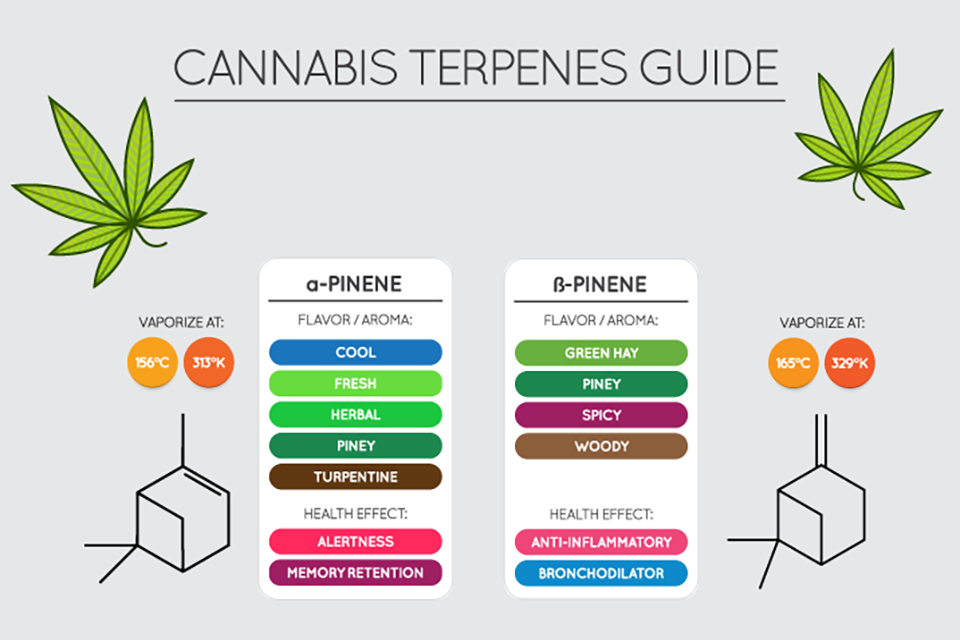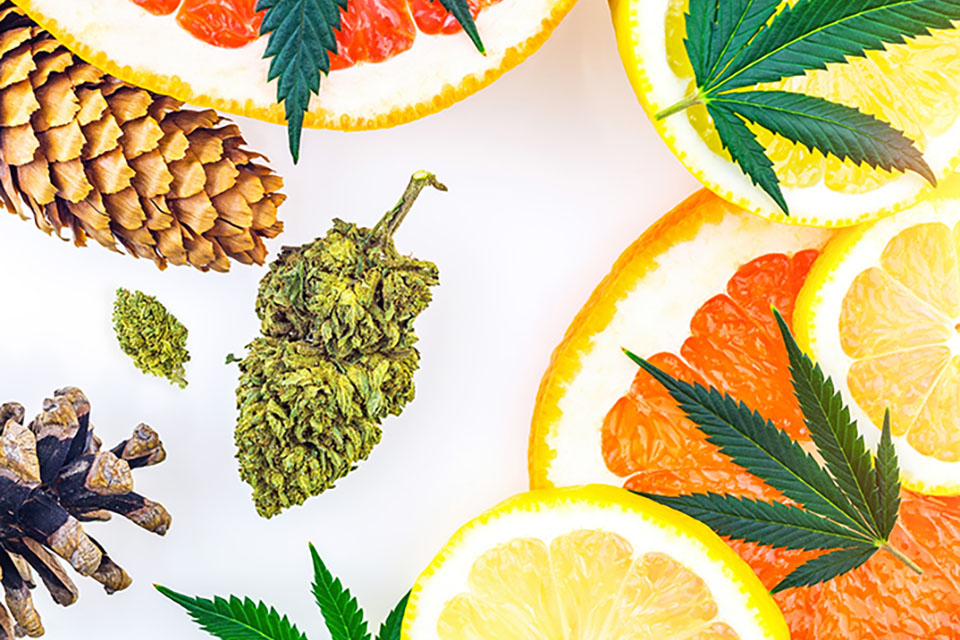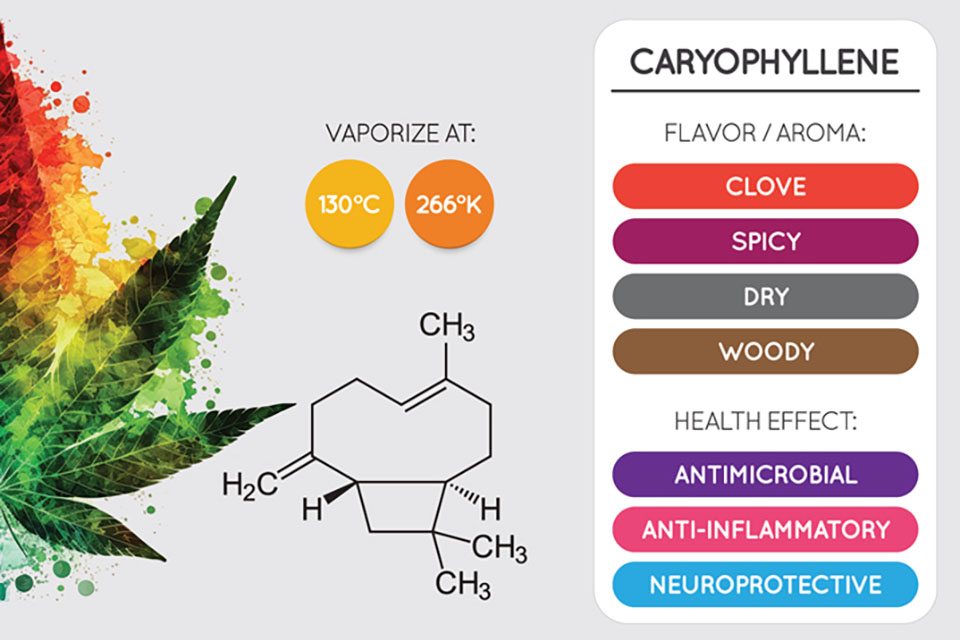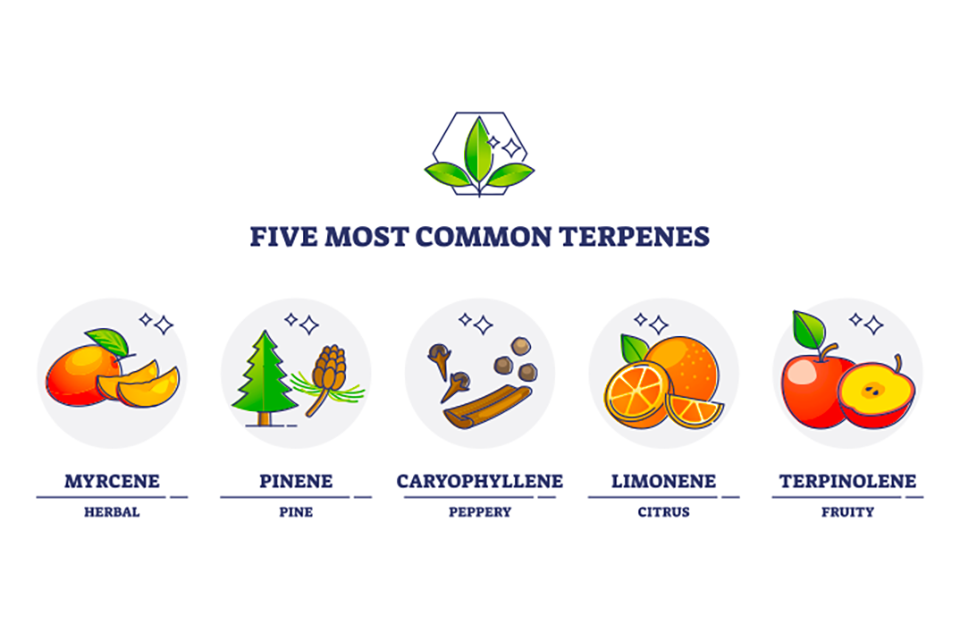
One of the key components to consider when cultivating cannabis is pinene terpene. This terpene plays a significant role in the aroma, flavor, and medicinal properties of cannabis. By familiarizing ourselves with pinene terpene, we can enhance our growing techniques and overall cannabis experience.
Fact 1: Chemical Structure of Pinene Terpene
The chemical structure of pinene terpene is what gives it its unique characteristics. As part of the monoterpenes subgroup, pinene has a straightforward molecular structure compared to some of its fellow terpenes.
Pinene comes in two isomeric forms: alpha-pinene and beta-pinene. They differ only by the placement of their functional groups. Alpha-pinene is the most common pinene found in nature and is primarily responsible for the pine-like aroma we associate with certain cannabis strains.
The cannabis plant produces pinene terpene in the trichomes—the tiny, cannabinoid-filled glands that cover the surface. The plant’s genetics and factors like light, temperature, nutrients, and water availability during its growth cycle influence the amount and composition of terpenes in a given strain. Understanding pinene’s chemical structure enables growers to control and manipulate its production to enhance the desired characteristics of their cannabis crops.
Fact 2: Aroma and Flavor Profile
The distinct aroma of pinene terpene is primarily fresh pine, hence its name. This scent is highly refreshing and often associated with natural environments such as woodlands or forests. Besides pine, it can also exhibit rosemary, basil, and dill notes. In terms of flavor, pinene brings a subtle, earthy taste with a hint of spice to the palette.
Pinene terpene is also known for its skunky scent, which adds to its earthy and spicy flavor profile. This characteristic aroma of cannabis is because of the complex interplay of terpenes, including pinene. This attribute helps gardeners identify cannabis plants with high pinene content and allows users to select strains based on their scent preferences.
Fact 3: Medicinal Properties
The therapeutic benefits of pinene terpene are numerous. It has anti-inflammatory, antiseptic, and analgesic properties. Some research suggests it may also improve airflow to the lungs and act as a bronchodilator, potentially beneficial for individuals with asthma. Pinene shows benefits associated with improved memory and focus, reduced anxiety, and anti-cancer properties.
Pinene is present in many essential oils, particularly those derived from coniferous trees, rosemary, and certain citrus fruits. It is often used in aromatherapy practices and can offer therapeutic benefits, including stress relief, energy boost, and improved respiratory function. When diluted and applied topically, essential oils containing pinene may also relieve inflammation and pain.
Fact 4: Natural Sources of Pinene Terpene
Pinene terpene is not exclusive to cannabis. Conifer trees, rosemary, basil, pine nuts, and certain citrus fruits contain high concentrations of pinene terpene. In the world of cannabis, strains like Blue Dream, Chemdawg, and Trainwreck are particularly rich in pinene terpene.
Fact 5: Interactions With Other Compounds
One of the fascinating features of pinene terpene is its synergistic effects with other cannabis compounds. It enhances the medicinal properties of cannabinoids and other terpenes, a phenomenon known as the entourage effect. Some studies suggest that pinene can counteract the effects of THC, reducing memory impairment and paranoia associated with its use.
Fact 6: Environmental Benefits
Pinene terpene is crucial in plant defense mechanisms, as it deters pests and attracts pollinators. Its presence can help preserve a given ecosystem’s biodiversity and even contribute to successful crop growth.
Fact 7: Industrial and Commercial Applications
Beyond the cannabis world, various industries utilize pinene terpene. Often used in fragrances, cleaning products, and cosmetics due to its appealing aroma, it has also found its place in the production of biofuels and as a natural solvent in industries such as construction.
Fact 8: Research and Development
Research into pinene terpene is ongoing, with many promising findings, particularly in medical applications. Studies have explored its potential neuroprotective properties, anti-cancer effects, and usefulness as an antimicrobial agent.
Fact 9: Cultivation and Extraction Techniques
Maximizing pinene terpene content in cannabis involves careful monitoring of light, temperature, nutrients, and water during the growth cycle. Post-harvest, careful handling, and controlled drying and curing processes can preserve pinene and other terpene contents. Extraction methods like steam distillation and cold pressing can also help maintain the terpene profile.
Fact 10: Consumer Recommendations and Warnings
Consumers interested in pinene-rich products should look for lab-tested items that indicate their terpene content. While generally considered safe, pinene terpene, like all terpenes, can cause irritation when used in high concentrations and should be used responsibly.
Understanding the top 10 facts about pinene terpene not only enhances the cannabis growing and usage experience but can also open doors to its potential benefits in our daily lives. Visit kindseed.com today to explore a vast selection of cannabis seeds and embark on your cultivation journey.



